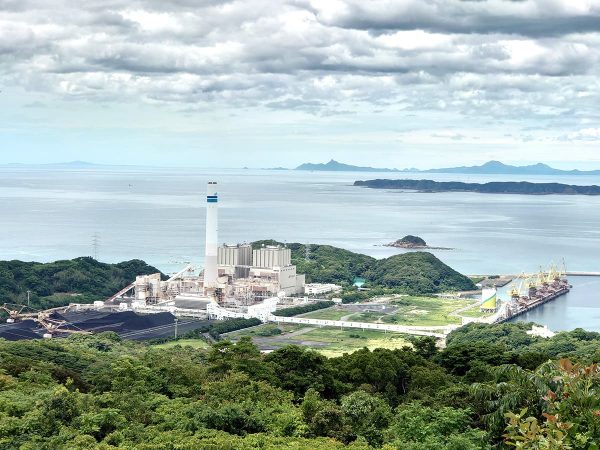Since the GENESIS Matsushima Plan was announced by J-Power in April 2021, an environmental impact assessment (EIA) for this project has been steadily progressing.
J-Power has reported that more than 800 public comments were submitted on the last EIA document (Document on Primary Environmental Impact Consideration) in September 2021, and over 3,000 submitted on the Scoping Document in October 2022, record numbers for an environmental assessment of a thermal power generation project.
However, J-Power’s responses to these comments were more than just unsatisfactory; they were completely dishonest. J-Power repeatedly responded to different questions and opinions with the same statements, one such example being “This (GENESIS Matsushima) Plan will improve thermal efficiency and reduce CO2 emissions by approximately 10% compared to the existing Unit 2. The newly added oxygen blown IGCC has a high affinity with CCUS (carbon dioxide capture, utilization, and storage) and carbon recycling. This feature makes it possible to aim not only to reduce more carbon dioxide emissions by introducing carbon-free fuels such as biomass and ammonia, but also achieve zero emissions by implementing CCUS.”
The CO₂ reduction with this plan is only about 10%, and the feasibility of CCUS as a technology is still uncertain. How can we say this plan is the first step toward achieving carbon neutrality in 2050?
In February 2023, the Cabinet approved the GX (Green Transformation) Basic Policy and the GX Promotion Bill. In that context, the government has made it clear that it is developing a framework for the use of hydrogen and ammonia as fuels for power generation and is promoting the commercialization of CCUS. The GENESIS Matsushima project also aims to utilize hydrogen and ammonia, but there are a number of technical, economic, and supply issues that need to be addressed, with CCUS facing similar issues.
J-Power indicates that it will continue to use coal-fired power generation by utilizing its own gasification technology (Integrated Gasification Combined Cycle, IGCC), which converts gas generated from coal into hydrogen and carbon dioxide. J-Power says it is looking at CO₂-free hydrogen power generation in the future, but there is no pathway to obtain enough renewable energy-derived hydrogen to be used for power generation, which could delay the path to achieving carbon neutrality.
After the period to submit public comments on the Scoping Document was closed, the environmental assessment of the GENESIS Matsushima Plan was reviewed by the Environmental Impact Review Committee of Nagasaki Prefecture (December 22, 2022) and the Environmental Impact Review Committee (Thermal Power Subcommittee) of the Ministry of Economy, Trade and Industry (February 10, 2023). Then, a review report was submitted on February 24, along with a Ministerial notification from METI stating “appropriate consideration is given to environmental conservation”. Thus, the EIA process for this project will proceed to the next stage, the Draft Environmental Impact Statement (draft EIS). It is not yet clear when the next document will be opened for the public to see, but we must continue to speak out about this project.
About Matsushima
Matsushima is a nature-rich island located in Saikai City, Nagasaki Prefecture, with a circumference of less than 10 km. Instead of continuing coal-fired power generation, we should be taking advantage of Matsushima’s location to speed up the transition to and expansion of renewable energy. When Saikai City solicited public comments on the “Saikai City Draft Action Plan for Global Warming Countermeasures (area policy version)” (February 27 – March 6), Kiko Network (Tokyo Office) submitted a comment emphasizing the need to hasten the transition to renewable energy, and pointed out the issues regarding the GENESIS Matsushima Plan.
GENESIS Matshima Pamphlet
To read more about the GENESIS Matsushima Plan’s numerous issues, please see the pamphlet published by Kiko Network. We hope that this pamphlet will be useful to spread awareness of the project’s issues.
Continuing coal power means more global warming, extreme weather and disasters (PDF)
GENESIS Matsushima Plan
The GENESIS Matsushima Plan will “upcycle” the Matsushima Thermal Power Plant Unit 2, which has been operating for over 40 years, by adding gasification system and gas turbine to reduce CO2 emissions. Unit 1 (500MW) first started operation in January 1981, and Unit 2 (500MW) started operation in June of the same year. J-Power is aiming to achieve net zero CO2 emissions in the future by combining ammonia and/or biomass co-firing and using CCUS.
* GENESIS Matsushima’s EIA document summaries are available (written in Japanese only) here
Related Link
ACT Matshima (Link)

